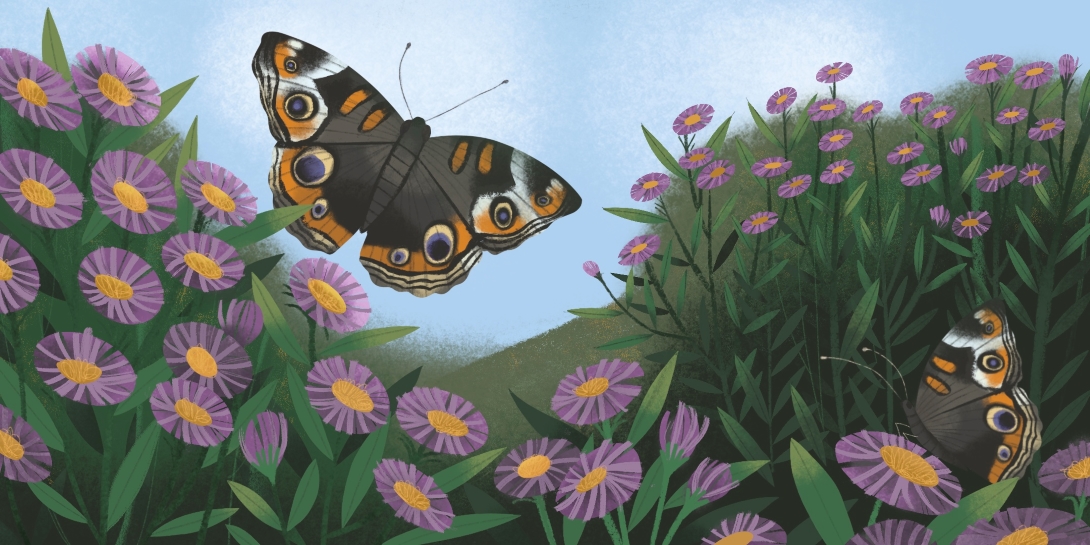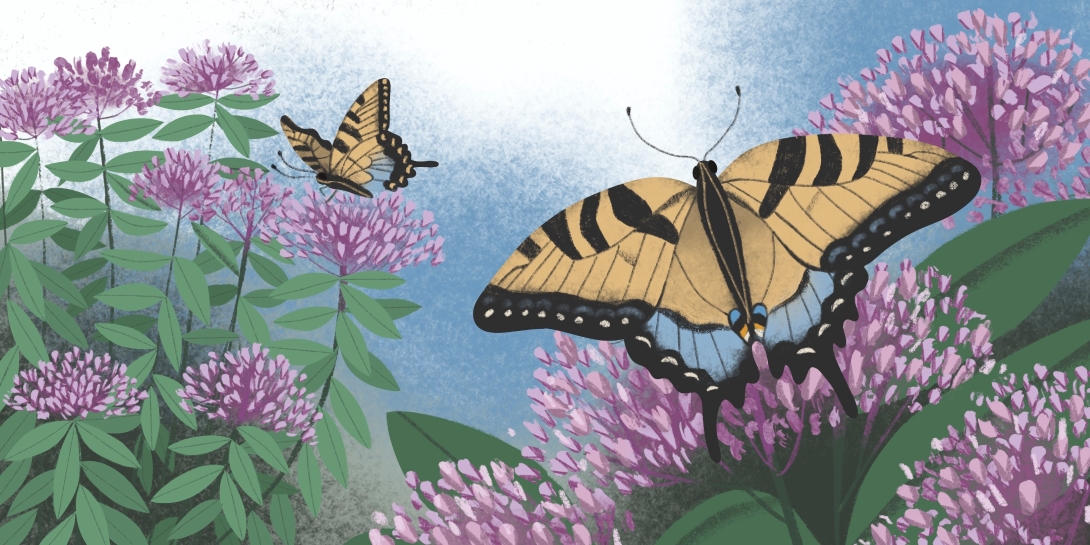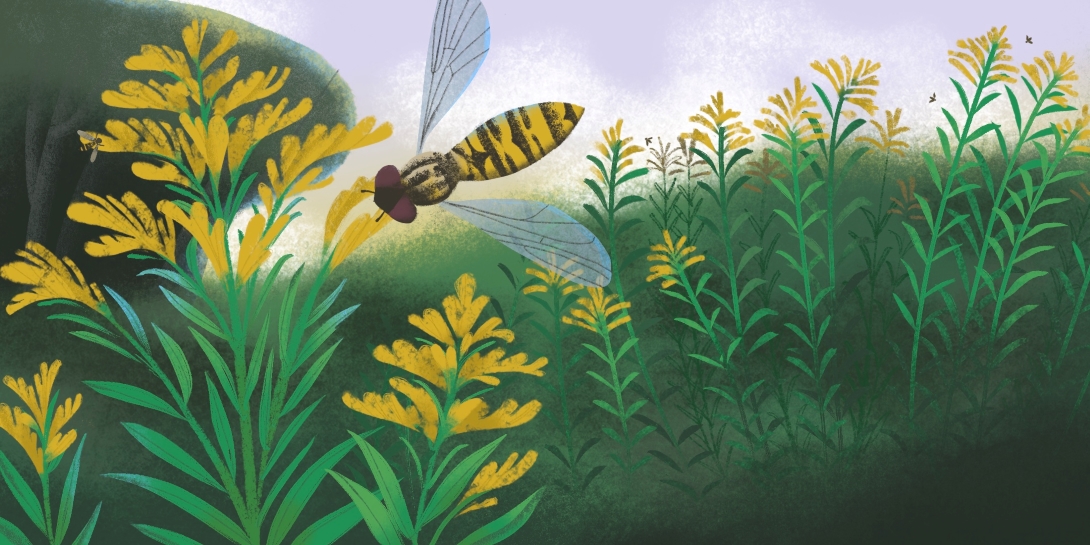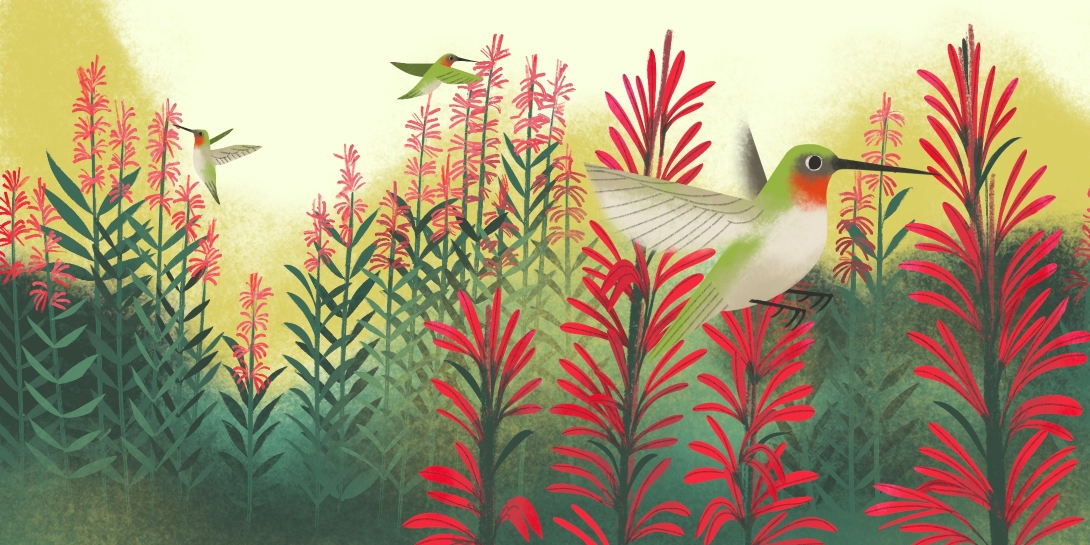Fall flowers feed butterflies, bees and more
By Jarmila Becka Lee, Steve Hamel and Ellen Jakubowski
When you spot a native plant on a nature hike, in a garden or at a nursery, do you ever wonder which wildlife species it supports? Or maybe you wonder which species the plant depends on for services like pollination? Well, here we’ll explore some fascinating relationships between native plants and wildlife that you can find across Canada in the fall.
To give wildlife species a helping hand — and to observe them close to home — try planting native plants in your yard, on your balcony or at a nearby community space. Visit wwf.ca/regrow to learn more.
New England aster + common buckeye

New England aster (Symphyotrichum novae-angliae), a bright rose-purple flower with orange-yellow centre, produces a lot of nectar even when temperatures are low. So as fall progresses, it becomes one of the last plant species providing food for pollinators.
Migrating butterflies like the common buckeye (Junonia coenia) take advantage of this and feed on the New England aster to get enough energy to migrate south. The flowers are welcoming, with a flat platform that allows the butterfly to rest while feeding on nectar.
Look for this pairing in southern Manitoba, Ontario and Quebec.
Spotted Joe Pye weed + butterflies and birds

A common sight in late summer and early fall, spotted Joe Pye weed (Eutrochium maculatum) is a tall perennial that thrives in moist environments, including wetlands, the banks of rivers and ponds, and ditches.
It, too, is a butterfly favourite — its nectar is food for butterflies like the Eastern tiger swallowtail and monarch while the caterpillar of the pearl crescent butterfly feeds on the plant itself. Some birds also take advantage of it: ruby-throated hummingbirds feed on its nectar and finches eat its seeds.
You can find spotted Joe Pye weed and its wildlife visitors from B.C. to the island of Newfoundland.
Canada goldenrod + hoverflies, butterflies and birds

Canada goldenrod (Solidago canadensis) produces abundant nectar, pollen and seeds, making this native species an important support for local biodiversity. Numerous species use this plant, including butterflies and moths, native bees and hoverflies.
Hoverflies, also called flower flies or syrphid flies, only look like wasps or bees — they are, in fact, flies and feed on Canada goldenrod’s nectar and pollen, helping with pollination. The large amount of seeds offered by this plant in early fall helps to feed songbirds such as sparrows and juncos before they migrate southward.
You can spot Canada goldenrod in all provinces.
Cardinal flower + hummingbirds, bees and butterflies

Cardinal flower (Lobelia cardinalis) is a magnet for pollinating ruby-throated hummingbirds, which are attracted to the stunning bright red colour of the flowers and to the energy-rich nectar needed to keep wings flapping 60 to 80 times per second.
Insects that frequent the cardinal flower include halictid bees (also called sweat bees) and larger bumble bees who can “steal” nectar through the base of the tubular flower without pollinating the plant. Several swallowtail butterflies, including black, spicebush and pipevine swallowtails, will drink nectar from this plant as well.
If you’ve been in southern Ontario or Quebec in late summer or fall, perhaps you’ve encountered this striking flower and its wildlife callers.


